3rd Meeting of the Conference of the Parties to the Minamata Convention on Mercury (COP3)
25-29 November 2019 | Geneva, Switzerland
Summary Highlights
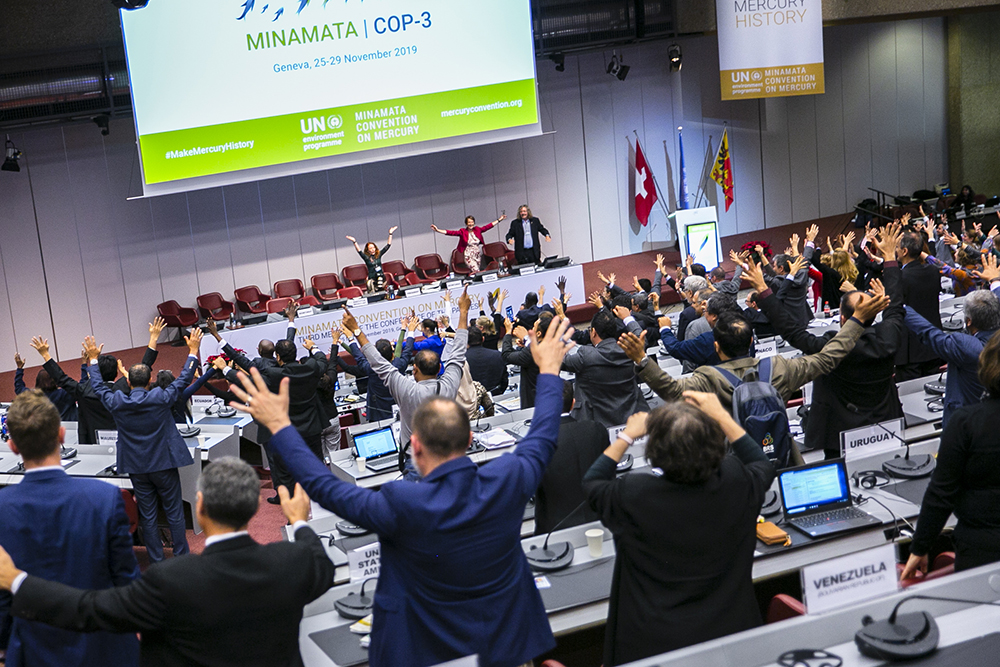
The fifth and final day of the third meeting of the Conference of the Parties to the Minamata Convention on Mercury convened in a series of plenary sessions throughout the day. Delegates had worked in Contact Groups throughout Thursday night and into the early morning hours on Friday, in order to reach agreement on the COP3 decisions.
On Friday, the COP alternated between plenary sessions, resumed Contact Group sessions, and bilateral consultations in an effort to conclude agreement on all topics. By the closing gavel for COP3, decisions had been adopted on the following items:
- Customs codes;
- Cooperation between the Secretariats of the Minamata Convention and the Basel, Rotterdam and Stockholm (BRS) Conventions;
- Review of Annexes A & B (respectively, mercury-added products and processes using mercury or mercury compounds);
- Guidance for completing the national reporting format;
- Capacity building, technical assistance and technology transfer;
- Releases;
- Terms of reference (TOR) for the Implementation and Compliance Committee (ICC);
- Guidance on the management of contaminated sites;
- Review of the financial mechanism;
- Waste thresholds;
- Amendment of Annex A (dental amalgam);
- Effectiveness evaluation; and
- Programme of Work and Budget.
In addition, decisions on elections to the Bureau, the ICC, and Specific International Programme to Support Capacity Building and Technical Assistance (SIP) Governing Board were adopted. The UN Environment Programme (UNEP) Executive Director was asked to assess possible options for enhancing the SIP and its operations. These decisions joined decisions on Review of the Financial Mechanism and Venue and Date of COP4, which were adopted earlier in the week, to comprise the COP’s marching orders for work under the Convention during the next two years.
During the closing plenary, the African Group expressed appreciation for progress made in some decisions but noted that Amendments to Annex A did not progress as they had wished. The EU expressed regret that the proposal on international cooperation was not adopted despite overwhelming support by parties.
The Central and Eastern European Group applauded the “baby steps” made by the Convention and noted that there were bound to be challenges in the Convention’s early stages. The decisions on the approval of the ICC TOR and Cooperation between the Secretariats of the Minamata Convention and the BRS Conventions were welcomed by several speakers.
COP3 was gaveled to a close at 2:46 am on 30 November.
+ Visit the web coverage for Friday, 29 November 2019
IISD Reporting Services, through its Earth Negotiations Bulletin (ENB) meeting coverage, is providing daily web coverage, daily reports, and has produced a summary and analysis report from COP3, which is now avaliable in HTML and PDF.
Photos by IISD/ENB | Sean Wu
For photo reprint permissions, please follow instructions at our Attribution Regulations for Meeting Photo Usage Page
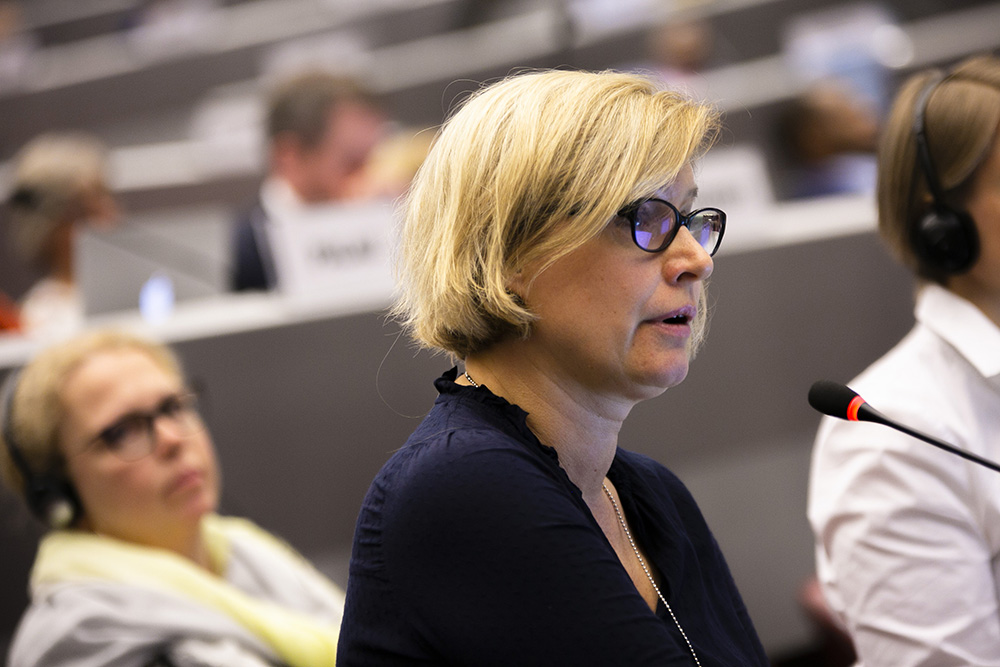

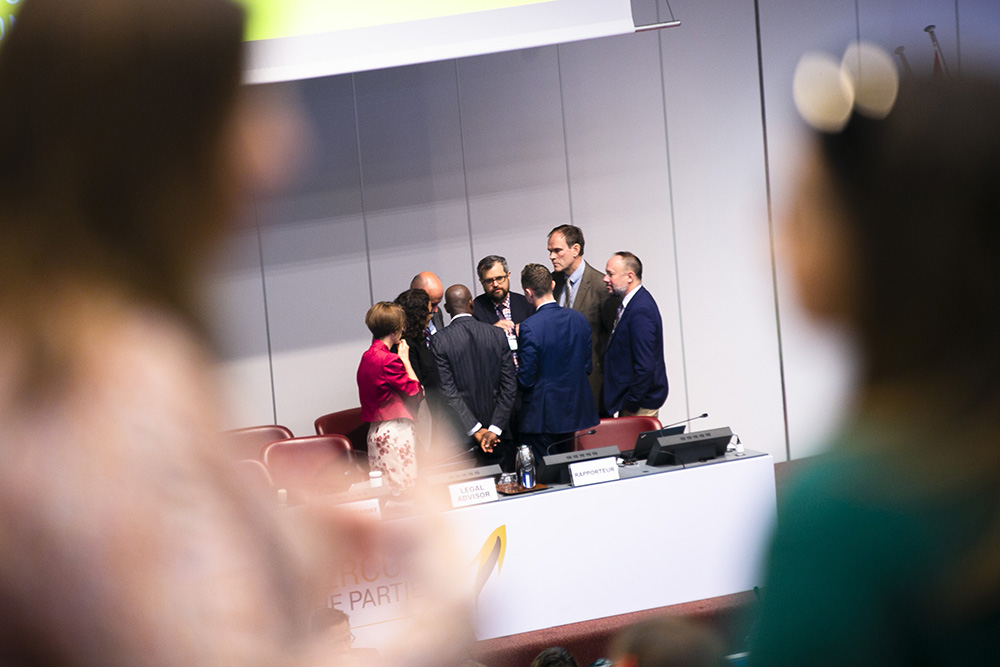
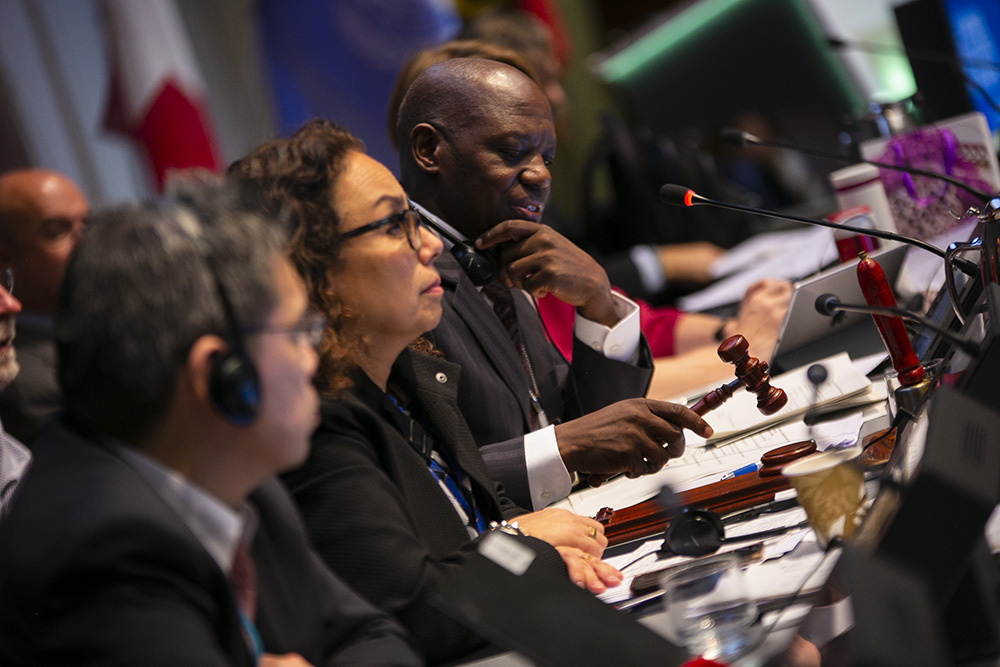
Highlights for Thursday, 28 November 2019
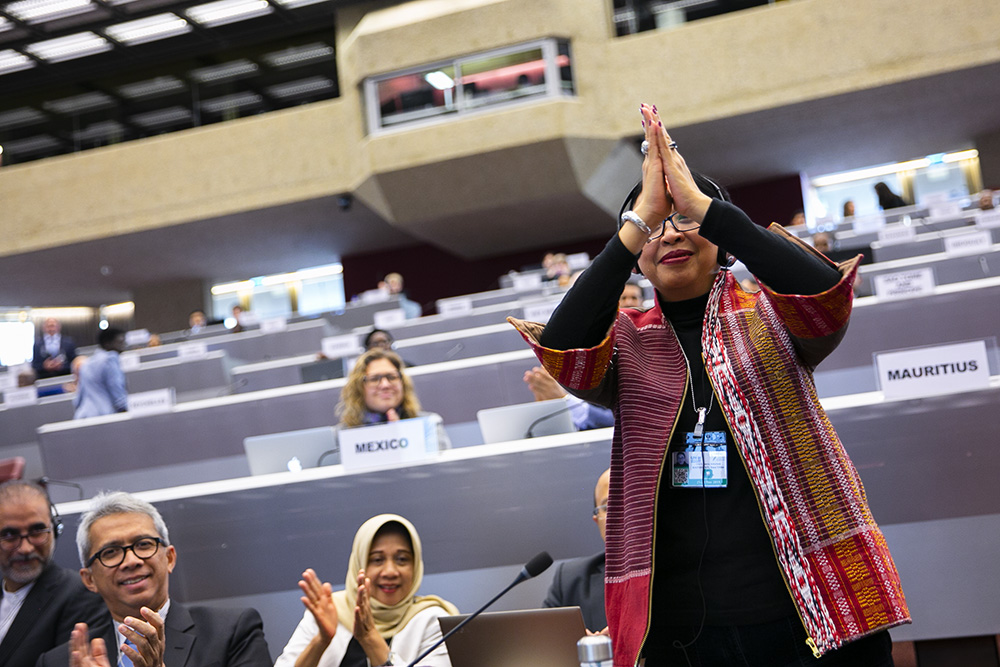
COP3 delegates discussed cooperation with the World Health Organization (WHO), International Labour Organization (ILO) and other international organizations during the morning and resumed their work in contact groups for the rest of the day and into the night. Delegates also elected Rosa Vivien (Indonesia) as President of COP4, by acclamation.
During the discussion on international cooperation and coordination, WHO highlighted health-related activities relevant to the Minamata Convention, including the WHO guidance on prioritization and planning for implementation of the health-related articles of the Minamata Convention and regional workshops. The ILO discussed the promotion of ILO international instruments for the prevention of occupational diseases caused by mercury, projects in the artisanal and small-scale gold mining (ASGM) sector and other relevant ILO activities in support of the implementation of the Convention.
The Global Mercury Partnership (GMP) informed plenary that the tenth meeting of the GMP Advisory Group highlighted intended future actions, including further refinement of mercury emissions factors, development of a centralized database on mercury, and guidance on waste management technologies. The UN Environment Programme (UNEP), speaking as Chair for the Global Mercury Advisory Group, provided updates on UNEP activities undertaken in relation to work on mercury. The Secretariat of the Strategic Approach to International Chemicals Management (SAICM) noted that mercury would be addressed at the fifth meeting of the International Conference on Chemicals Management meeting (ICCM-5) scheduled for October 2020. The Inter-Organization Programme for the Sound Management of Chemicals (IOMC) discussed cooperation with the Global Environment Facility (GEF) on ASGM under its planetGOLD programme. The UN Institute for Training and Research (UNITAR) highlighted its technical assistance on capacity building, including its online MercuryLearn training course for inventories.
The International Atomic Energy Agency (IAEA) discussed its interest in supporting effectiveness evaluation under the Convention with quality assurance data for fish, biota and other indicators. The Group on Earth Observations (GEO) discussed technical assistance for monitoring data under its Global Observation System for Mercury (GOS4M). The UN Industrial Development Organization (UNIDO) highlighted work tackling mercury emissions associated with cement production, smelters, and waste management. Zero Mercury Group discussed achievements in the phaseout of high mercury products including actions undertaken by Amazon, Ebay, and Alibaba.
Some pointed to the group of indigenous leaders in plenary as a glaring reminder of the communities that could be impacted by the COP3 decisions. The Indigenous Federation of Madre De Dios, Peru, stressed the need to integrate the voices, and reflect the impact and needs, of indigenous communities in the work of the Minamata Convention. He urged parties to support ways to look at how mercury is impacting indigenous people.
With one day left, there was a sense of urgency by some and dread by others as Contact Groups continued their work into the night. The Contact Groups on Technical Matters, Effectiveness Evaluation, and Budget, together with the Friends of the President Group, are expected to conclude their deliberations by Friday, 29 November.
For more details on the day’s negotiations and to hear what delegates said in the corridors, see our daily Earth Negotiations Bulletin.
+ Visit the web coverage for Thursday, 28 November 2019
Photos by IISD/ENB | Sean Wu
For photo reprint permissions, please follow instructions at our Attribution Regulations for Meeting Photo Usage Page
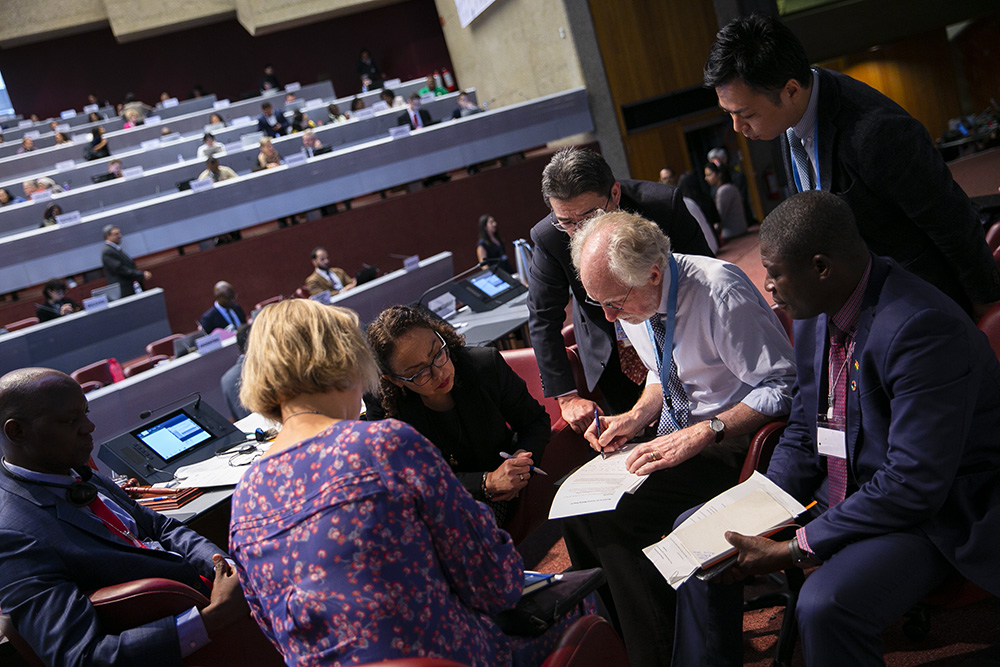
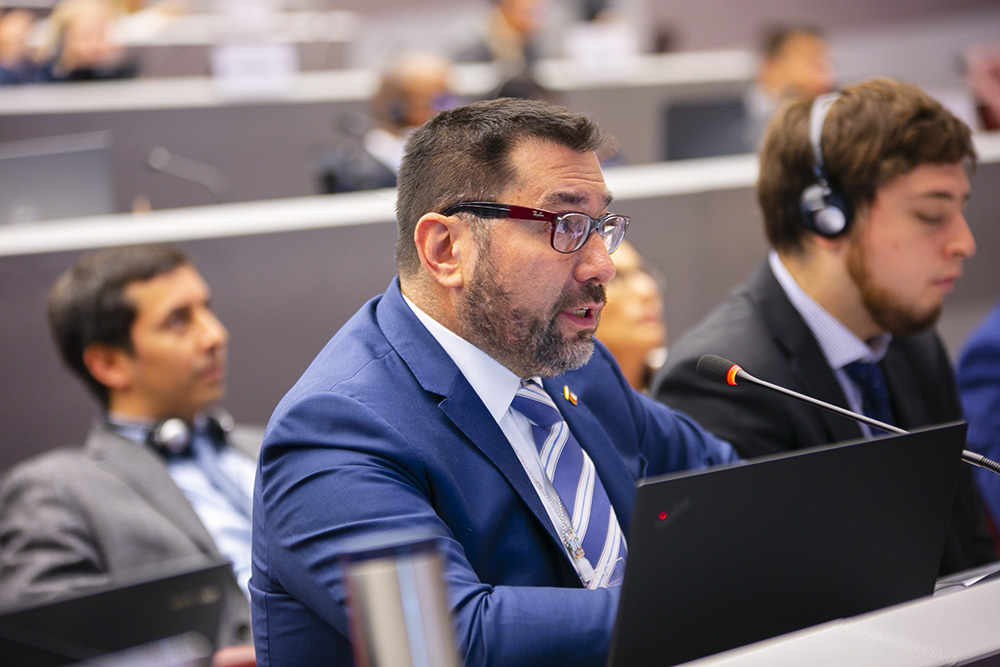
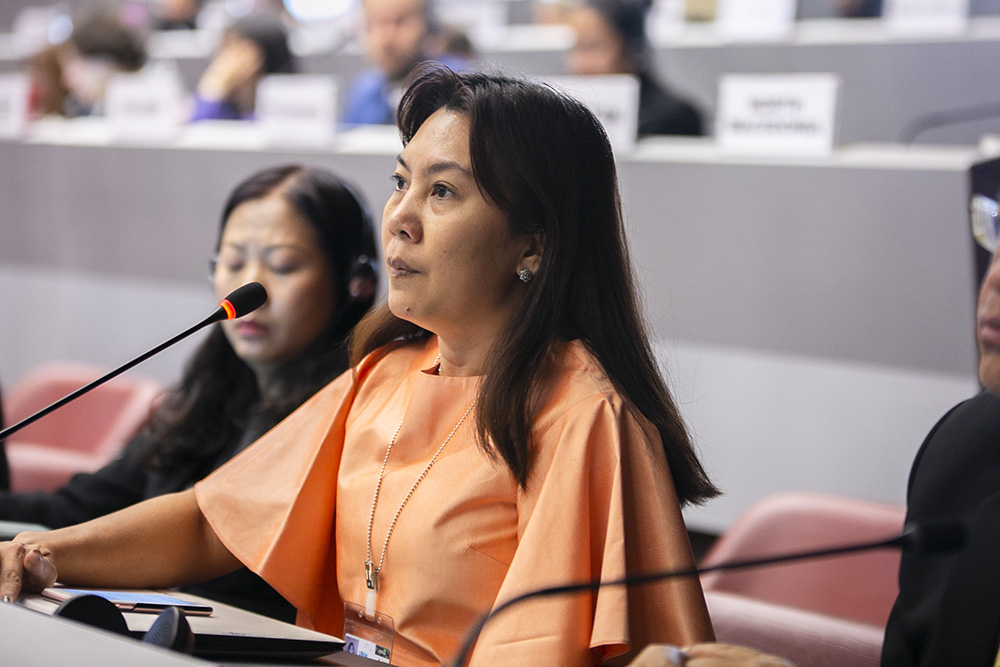
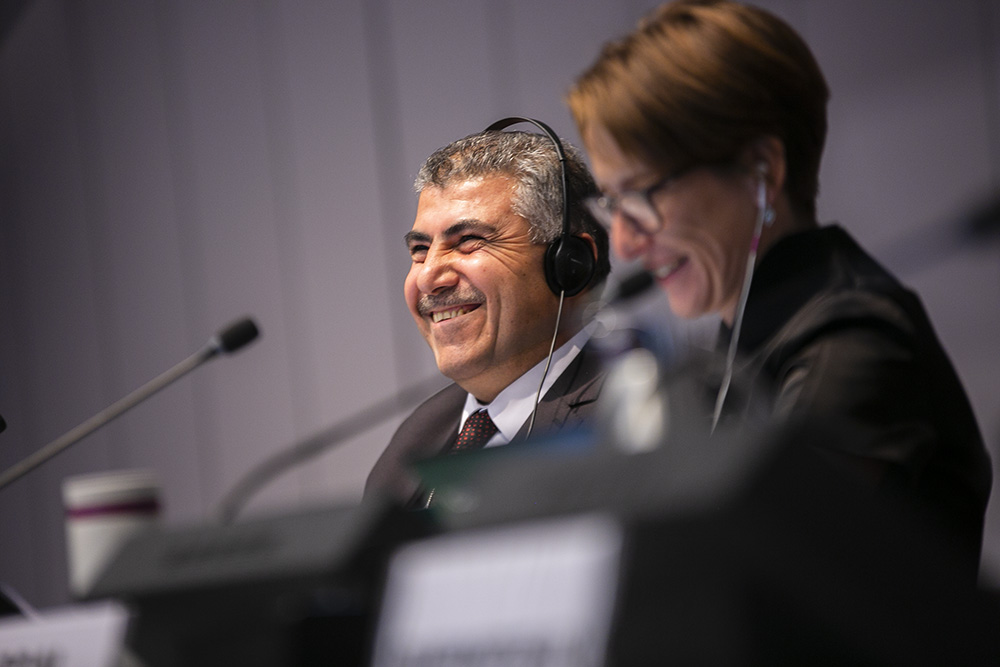


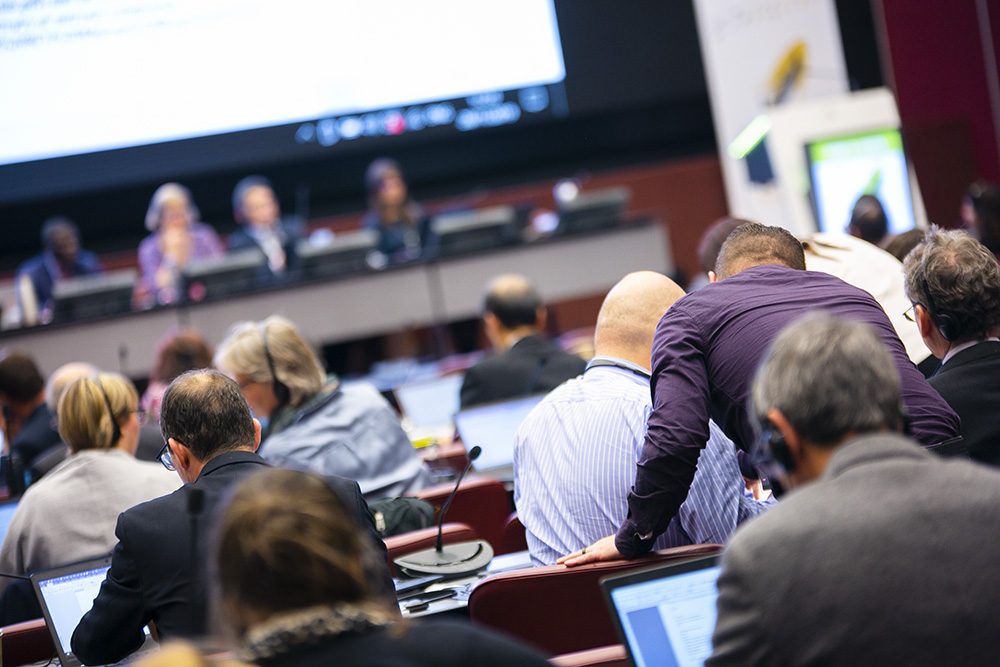
Highlights for Wednesday, 27 November 2019
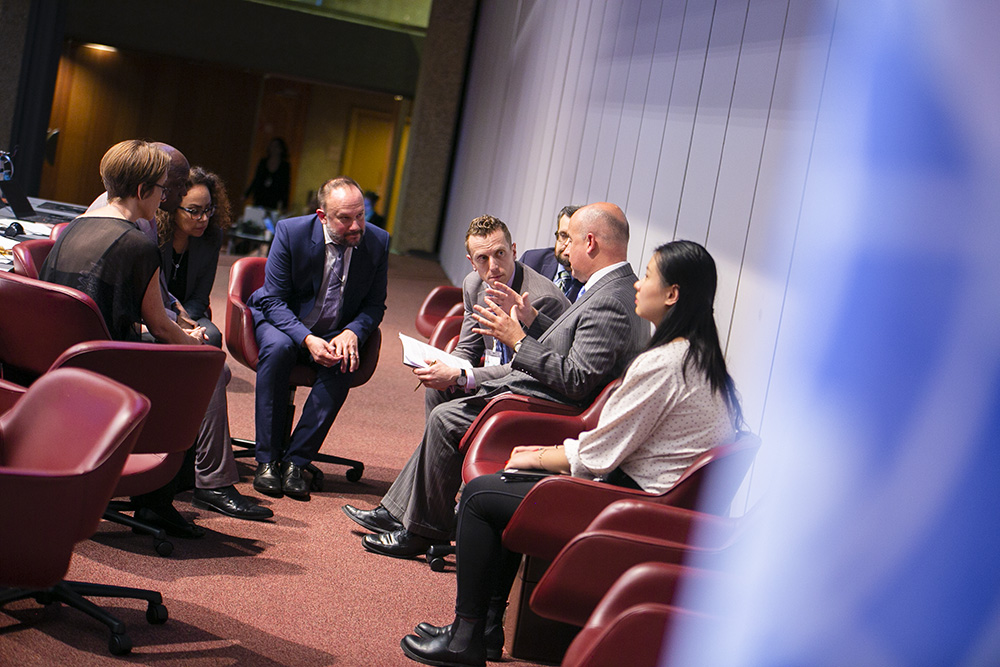
On Wednesday, COP3 delegates exchanged initial positions on a number of agenda items, discussed draft decisions in several contact groups, and participated in side events and knowledge labs. The agenda for this third COP of the Minamata Convention on Mercury comprises of a mix of items focused on establishing the smooth functioning of a new international treaty body, as well as items with a substantive focus on the products and manufacturing processes in which mercury or mercury compounds are used.
The Terms of Reference for the Implementation and Compliance Committee was discussed at length and ended in a deferment until Thursday. The Friends of the COP President Group reported that it had agreed on a draft decision to be forwarded to plenary on cooperative issues between the Secretariat of the Minamata Convention and the Secretariat of the Basel, Rotterdam and Stockholm Conventions.
Agenda items addressed related to products and manufacturing processes included the Financial Mechanism, Capacity-building, Technical Assistance and Technology Transfer, Contaminated Sites, and Emissions of Mercury Resulting from the Open Burning of Waste. During the discussion on the Financial Mechanism, Norway announced a EUR 500,000.00 and Switzerland announced a CHF 100,000.00 voluntary contribution to the Specific International Programme to Support Capacity-building and Technical Assistance.
The Plenary adopted its first decision, on the review of the financial mechanism, in which parties welcomed the report and requested the Secretariat to prepare draft terms of reference for the second review and consideration at COP4.
Side events on Wednesday addressed mercury science, lessons learned from the National Action Plans on artisanal and small-scale gold mining (ASGM), and “Dangerous, mercury-laden and often illegal skin-lightening products and measures to restrict them under the Minamata Convention.”
Most of Thursday will be focused on the work of the contact groups, although issues such as releases still remain be discussed in plenary.
For more details on the day’s negotiations and to hear what delegates said in the corridors, see our daily Earth Negotiations Bulletin.
+ Visit the web coverage for Wednesday, 27 November 2019
Photos by IISD/ENB | Sean Wu
For photo reprint permissions, please follow instructions at our Attribution Regulations for Meeting Photo Usage Page
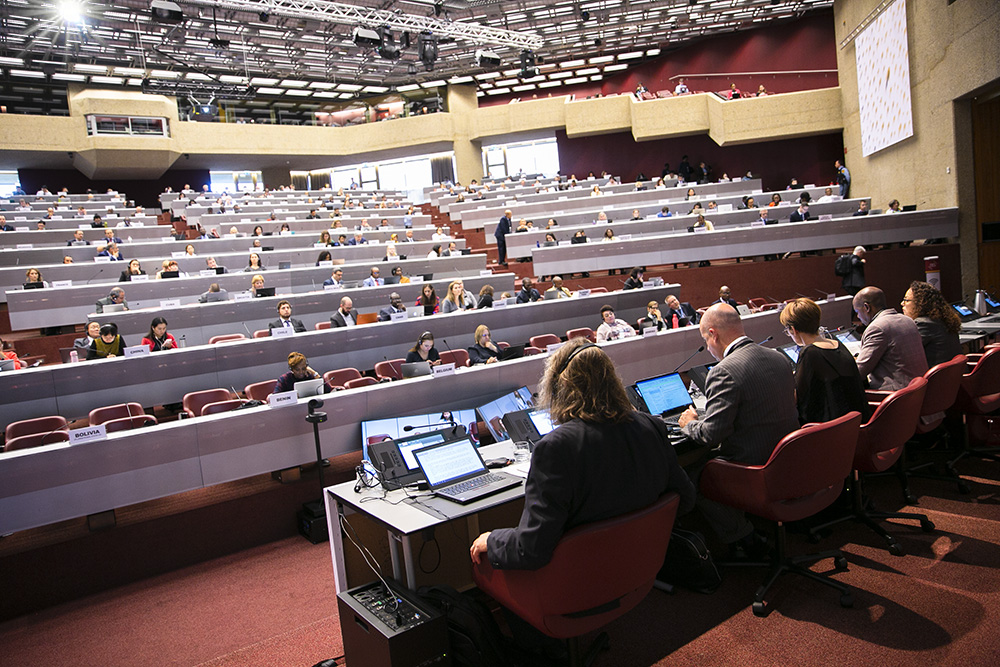
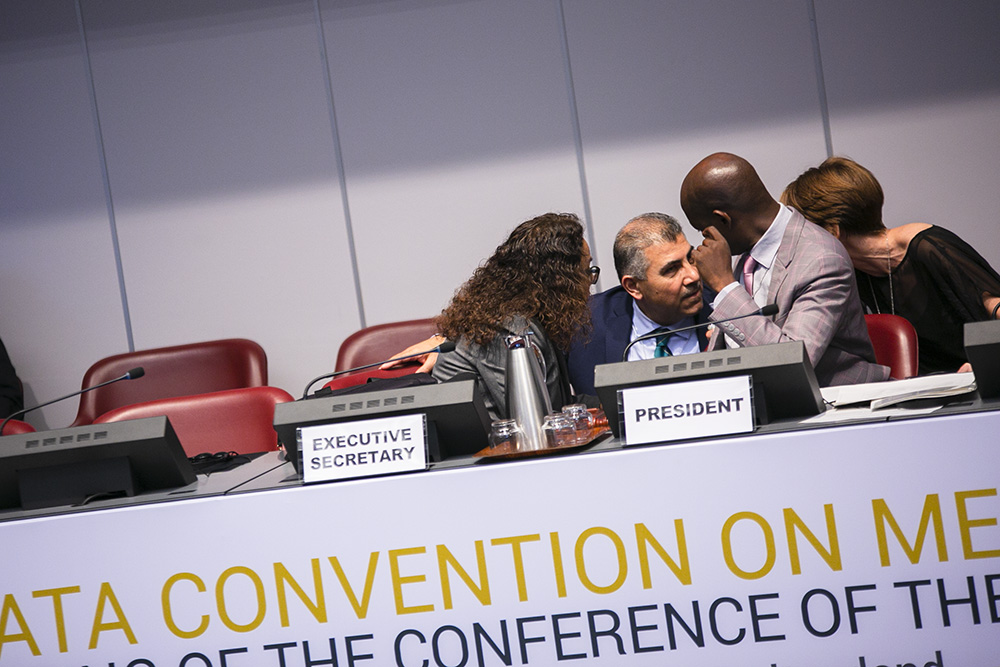
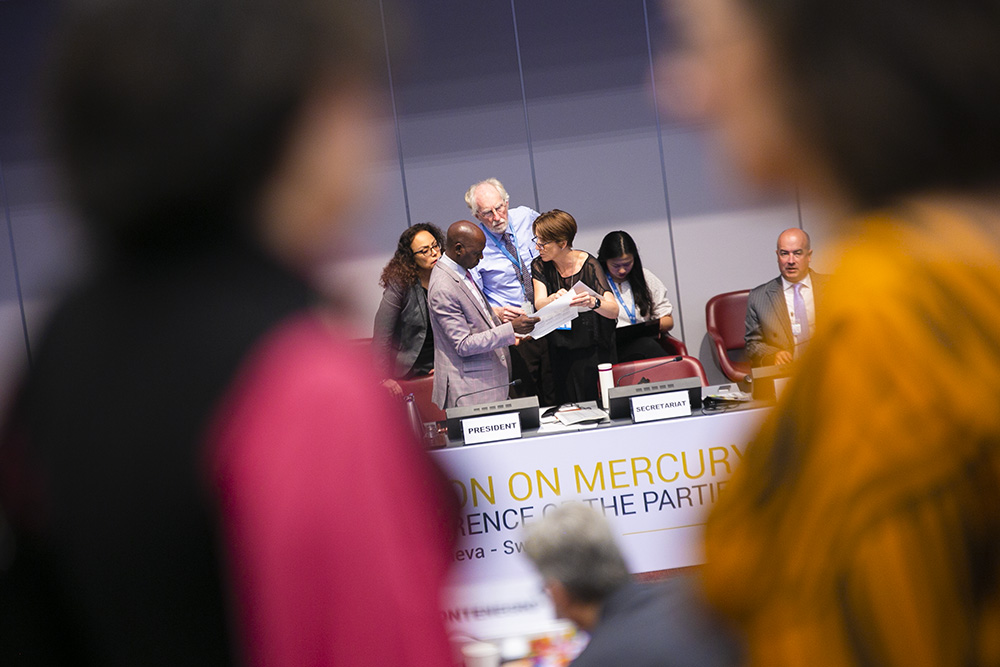
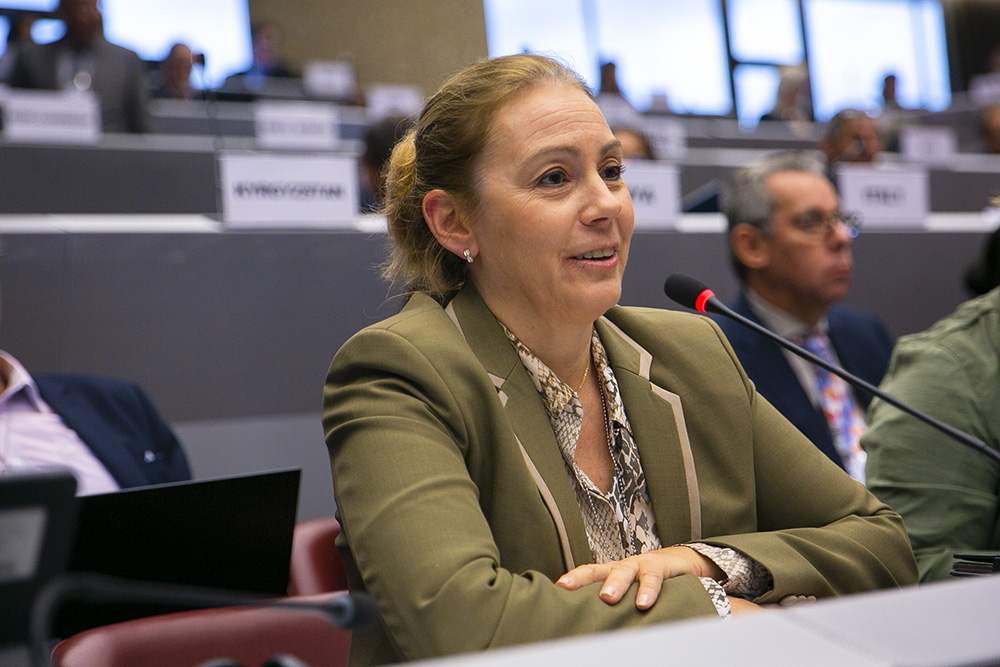
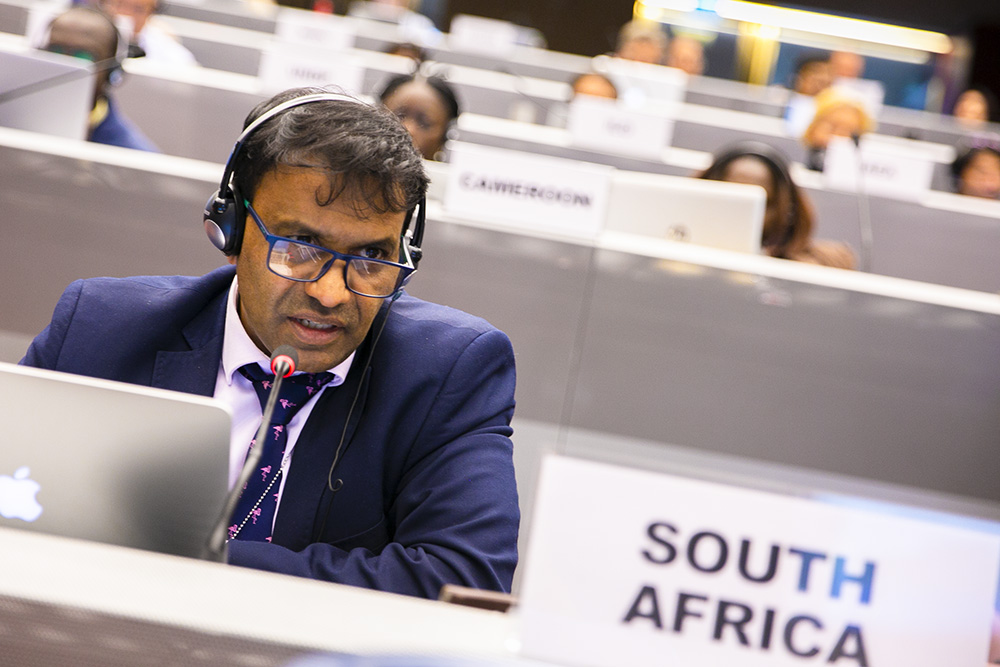
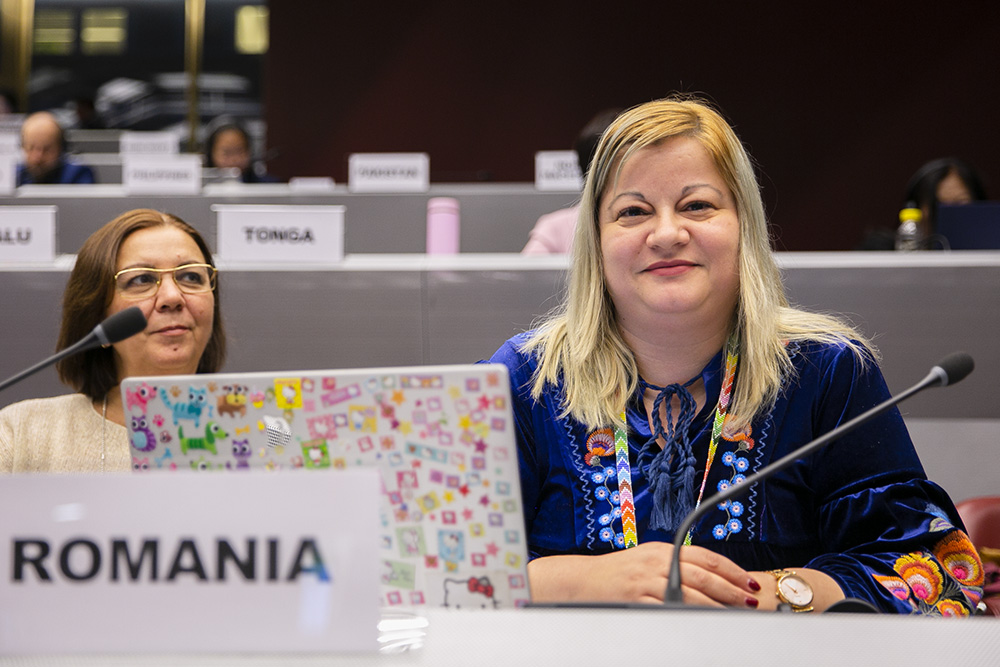
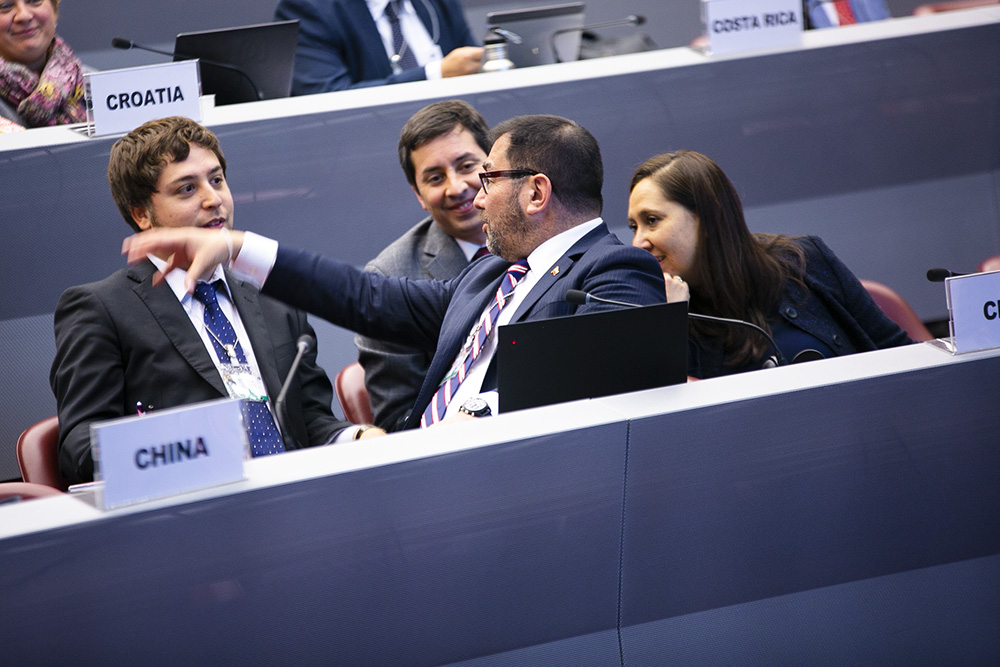
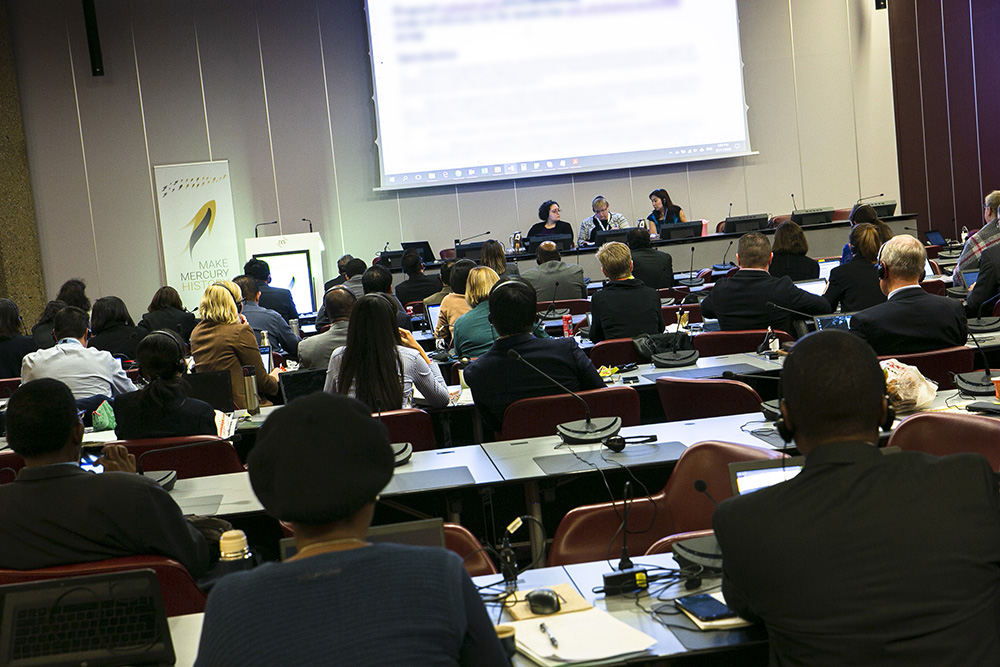
Highlights for Tuesday, 26 November 2019

On the second day of Minamata COP3, delegates exchanged initial positions on agenda items related to mercury-added products and manufacturing processes in which mercury or mercury compounds are used and the programme of work and budget. Contact groups were mandated to continue the discussions on most items.
During the morning plenary session, Effectiveness Evaluation Contact Group Co-Chair Kateřina Šebková (Czech Republic) and Friends of the President Group Chair Nina Cromnier (Sweden) reported on progress made in discussions in their groups.
Delegates then resumed the discussion that began Monday on the African Group’s proposal to amend Annex A to phaseout dental amalgam. The matter was referred to the Technical Matters Contact Group for further discussions.
On customs codes, the Secretariat highlighted four options for harmonization: i) internationally harmonized six-digit codes pursuant to World Customs Organization (WCO) standards; ii) statistical codes for products with more than six digits, developed differently depending on level of harmonization; iii) combination of the first two approaches, adjusted according to WCO procedure; iv) no action, inviting collaboration on monitoring procedures and other technical issues during the intersessional period. Following a discussion of parties’ preferred options, the issue was referred to the Technical Matters Contact Group.
On capacity-building, technical assistance and technology transfer, the Secretariat suggested continuing to compile relevant information from existing regional, sub-regional and national arrangements and report again to COP4. The Latin American and Caribbean Group (GRULAC) said it would be offering a proposal on follow-up to the COP2 decision on this topic. The President suspended discussion on this item until GRULAC’s proposal is received.
On mercury waste thresholds, the outcomes of the work of the group of technical experts were presented. The Technical Matters Contact Group was mandated to explore the issues further, but not reopen issues already agreed by the group of technical experts.
On releases, the Technical Matters Contact Group was tasked with further discussion with a view towards developing a draft decision on guidance for methodologies for preparing point source inventories and on best environmental practice (BEP)/best available techniques (BAT).
On financial mechanism, the Global Environment Facility (GEF) Secretariat introduced the third report on GEF support to the Minamata Convention, which notes that USD 206 million was indicatively allocated to Convention implementation for the current reporting period. The Minamata Secretariat presented updates on the Memorandum of Understanding with GEF adopted at COP2.
On Programme of Work and Budget, a contact group was created with a mandate to review the two scenarios proposed for the Programme of Work and Budget and to submit a draft decision for consideration by the plenary.
The Contact Groups continued to meet into the evening to progress on outstanding matters.
For more details on the day’s negotiations and to hear what delegates said in the corridors, see our daily Earth Negotiations Bulletin.
+ Visit the web coverage for Tuesday, 26 November 2019
Photos by IISD/ENB | Sean Wu
For photo reprint permissions, please follow instructions at our Attribution Regulations for Meeting Photo Usage Page
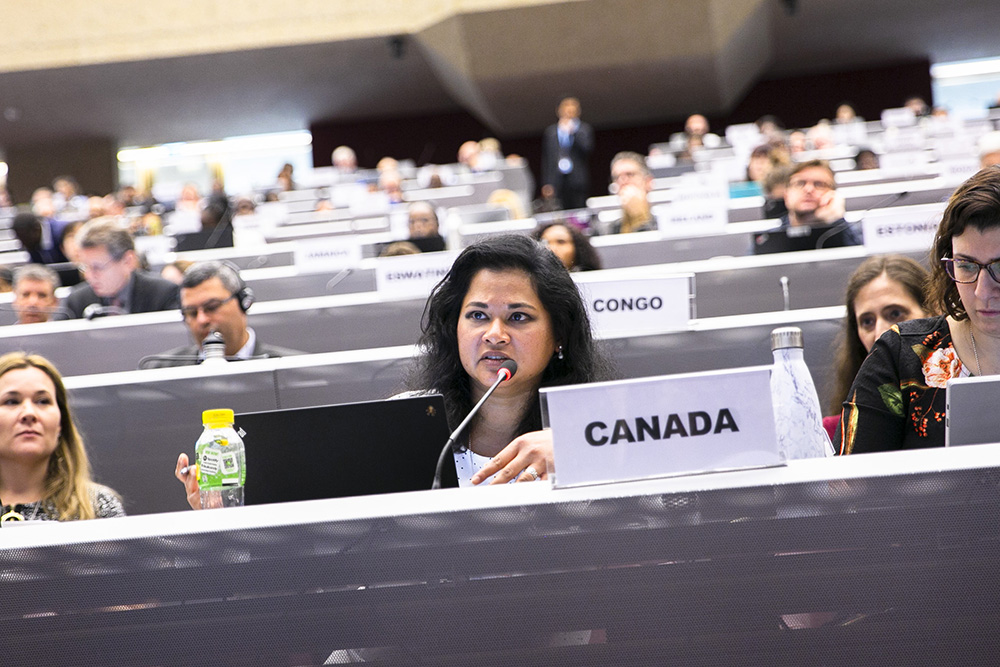

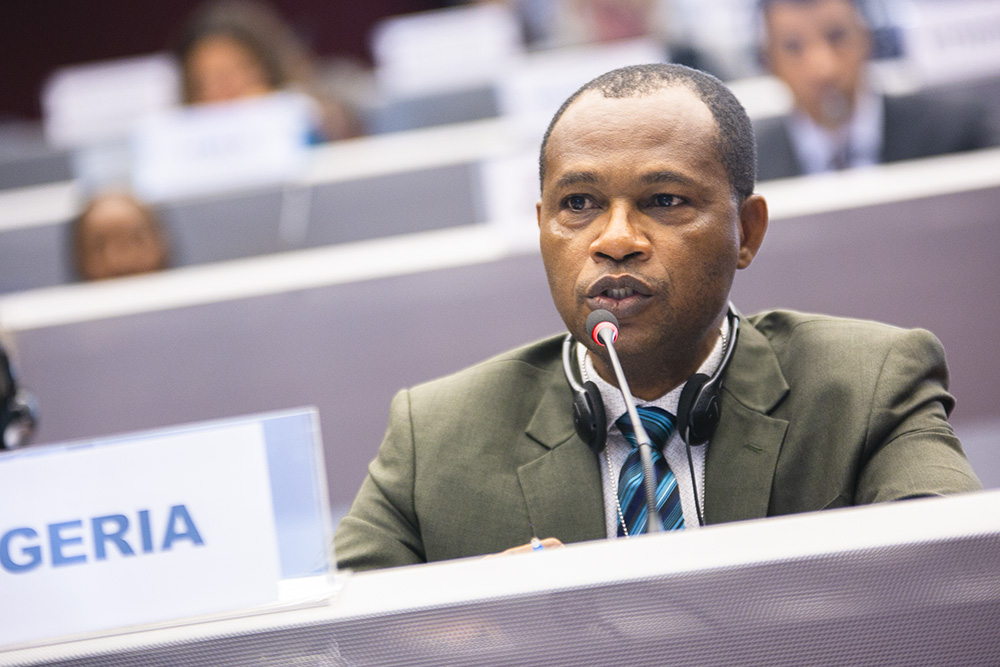

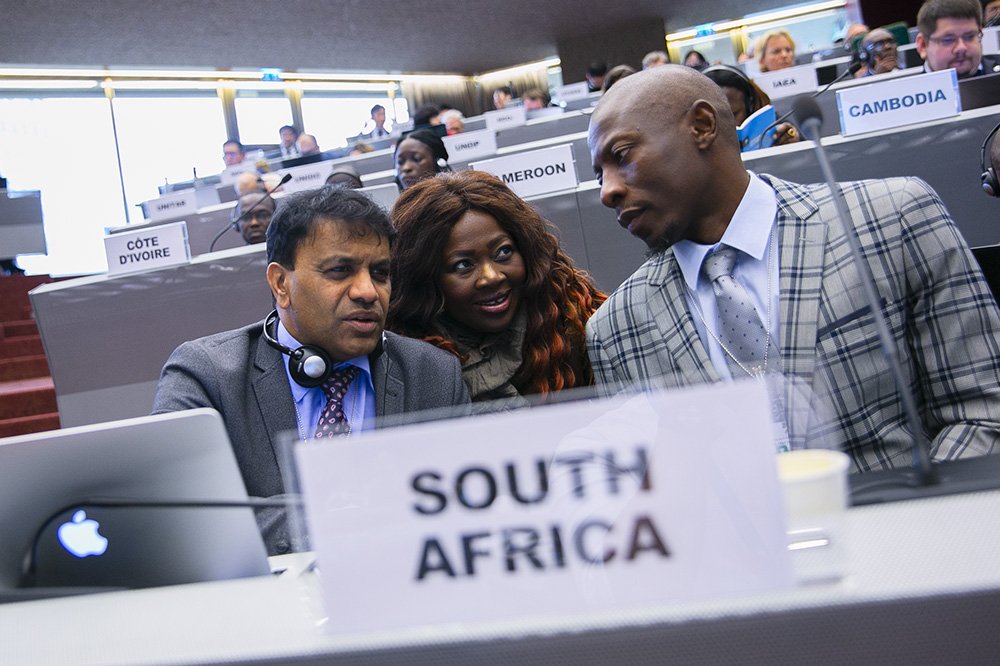
Highlights for Monday, 25 November 2019
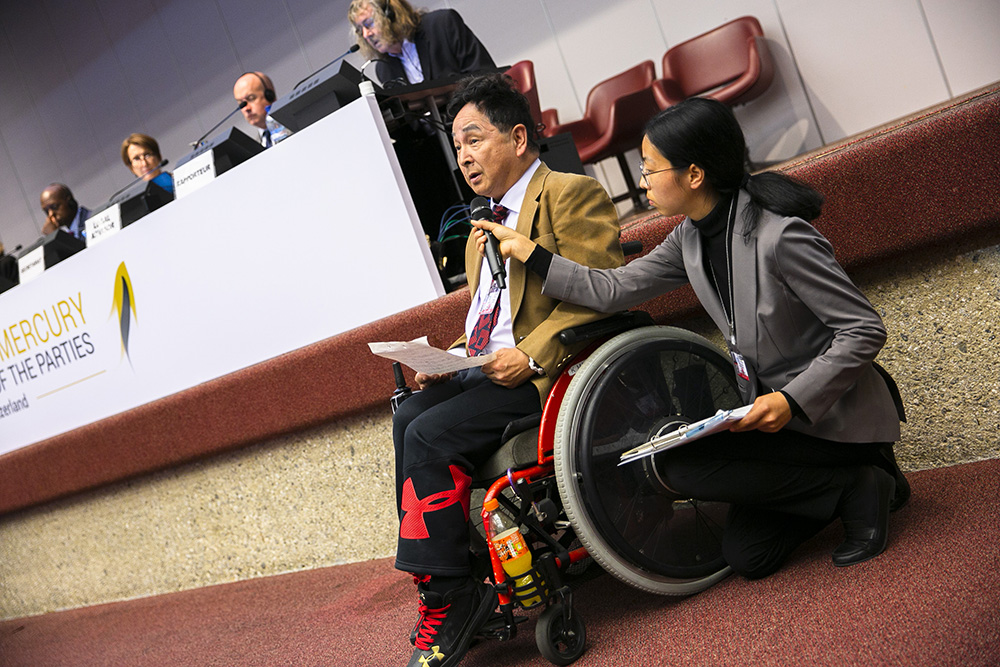
The third session of the Conference of the Parties (COP3) to the Minamata Convention on Mercury opened with statements by the host Government, the Executive Director of the UN Environment Programme (UNEP), the Executive Secretary of the Convention, the COP President and regional representatives.
Marc Chardonnens, Director, Federal Office for the Environment, Switzerland, warned that delays in implementation would only increase the complexity and costs of addressing problems caused by mercury. He also expressed hope for the development of a global framework to address the challenges of lead, cadmium, endocrine disruptors and other hazardous substances.
Inger Andersen, Executive Director, UNEP, highlighted four areas for action that are needed to reduce mercury exposure globally: artisanal and small-scale gold mining; stemming mercury trade; reducing emissions from coal combustion; and e-waste. She also stressed the importance of improving the science-policy interface to ensure evidence-based actions, and promoting cooperation across borders, organizations and instruments, “since mercury pollution is global and transboundary and needs to be treated as such.”
Rosanna Silva Repetto reflected on her two-year tenure as Minamata Convention Executive Secretary, noting progress including the establishment of the administrative basis of the Minamata Convention Secretariat, the work of the trust funds, and the success of the Specific International Programme to Support Capacity Building and Technical Assistance (SIP) and the Global Environment Facility in supporting the parties.
Minamata Convention President David Kapindula (Zambia) urged delegates to reach consensus on key agenda items, including elements related to the financial mechanism and rules of procedure. He reminded parties that the shift from annual COPs to COPs every two years will affect the ability of parties to implement the Convention and referred to issues carried over from COP2, including the effectiveness evaluation and the proposal to amend Annex A, urging parties to avoid leaving a legacy of unresolved issues.
During opening statements from regional groups, Gabon, on behalf of the African Group, urged consideration of amendments to Annex A on mercury-added products, reminding that Africa is not a manufacturer of such products but is more concerned with the trade of mercury. Iran, for the Asia-Pacific Group, stressed that effective implementation relies on the provision of adequate financial resources, technical assistance and technology transfer and remarked that the Amendment of Annex A proposed by African Countries requires further review. Moldova, for Central and Eastern Europe (CEE), said CEE countries are acting to implement the Convention and implored countries that have not yet ratified it to do so. Colombia, for the Latin America and Caribbean Group (GRULAC), emphasized her region's interest in work on trade, emissions, contaminated sites and open burning, and urged more contributions to the SIP. Finland, for the European Union, stressed the importance of reviewing Annexes A and B, the Convention’s effectiveness evaluation, and adopting a framework for cooperation between the secretariats of the Minamata Convention and the of the Basel, Rotterdam and Stockholm (BRS) Conventions.
Delegates proceeded to conduct initial exchanges on several agenda items and agreed that COP4 would convene in Bali, Indonesia at the end of 2021. They also created two contact groups and a “friends of the President” group to conduct negotiations on possible decisions regarding the Convention’s effectiveness evaluation, a review at COP4 of the annexes on mercury-added products and manufacturing processes using mercury, and cooperation between the secretariats of the Minamata and BRS Conventions.
For more details on the day’s negotiations and to hear what delegates said in the corridors, see our daily Earth Negotiations Bulletin.
+ Visit the web coverage for Monday, 25 November 2019
Photos by IISD/ENB | Sean Wu
For photo reprint permissions, please follow instructions at our Attribution Regulations for Meeting Photo Usage Page
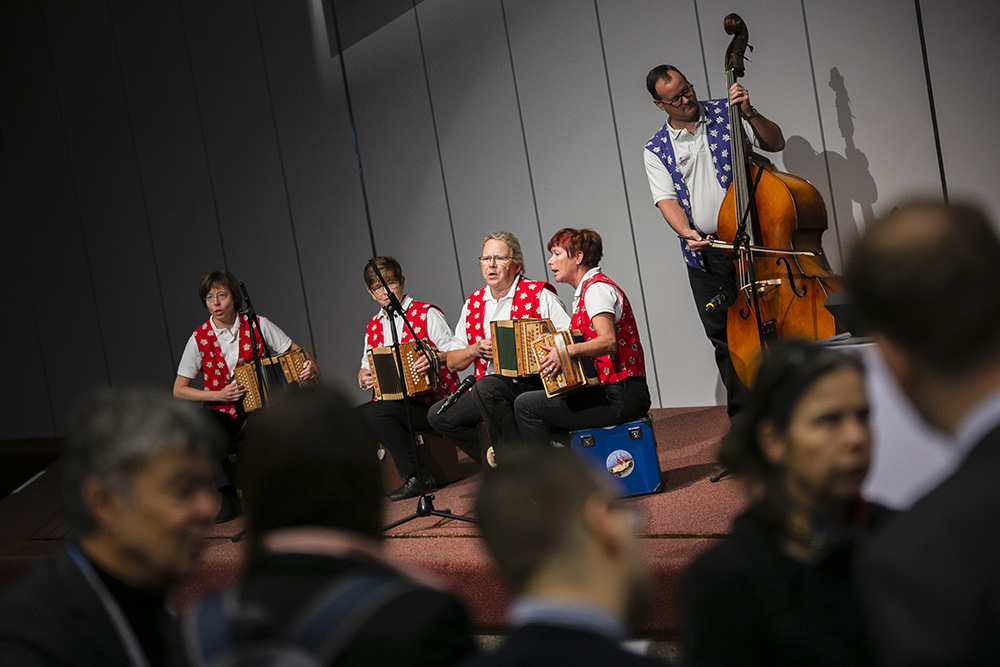
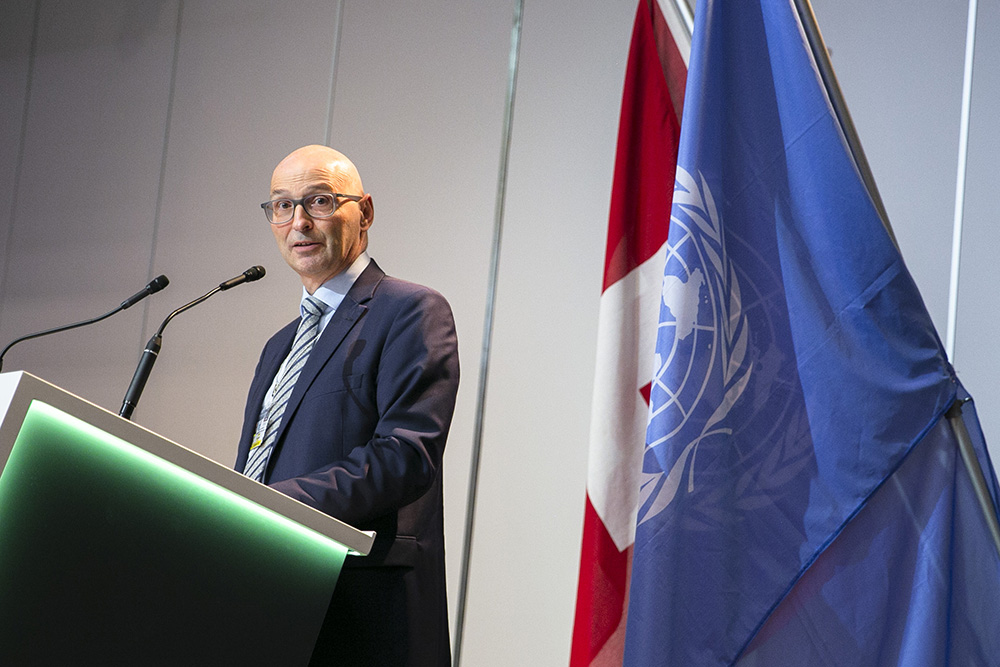
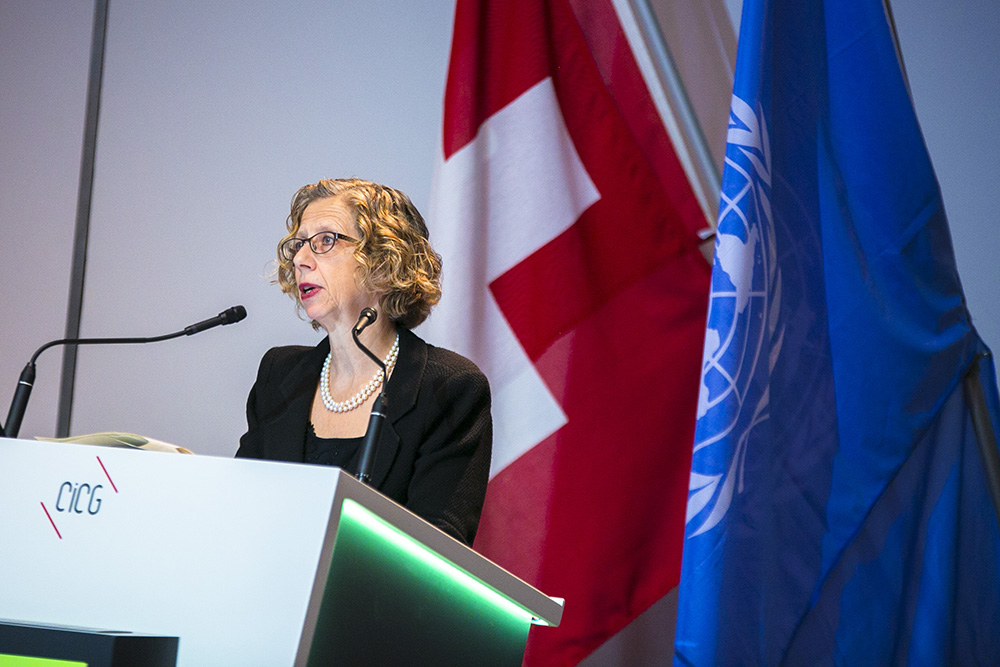
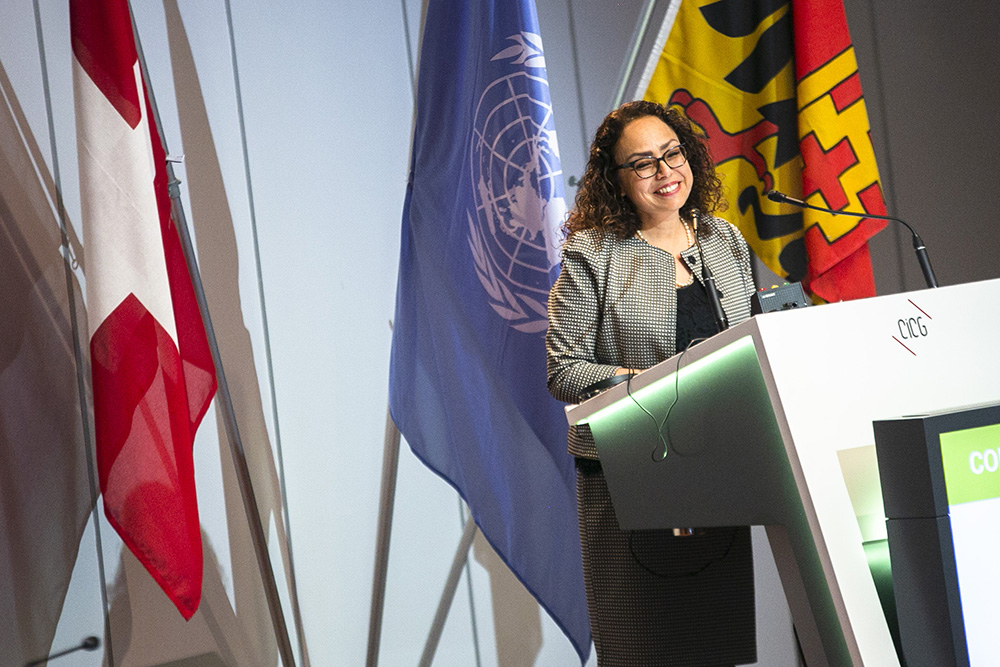
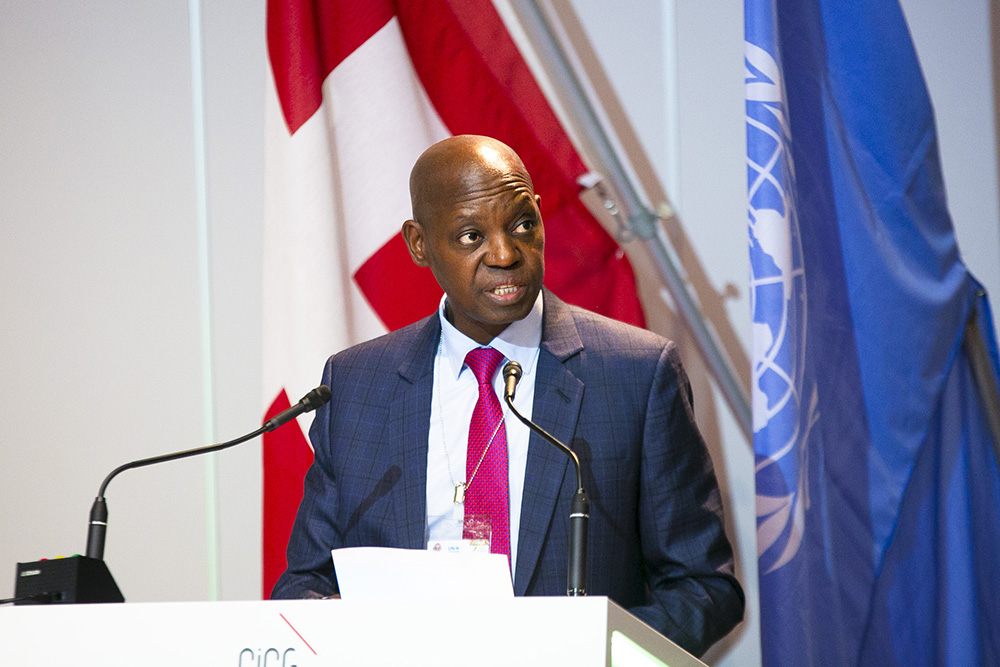
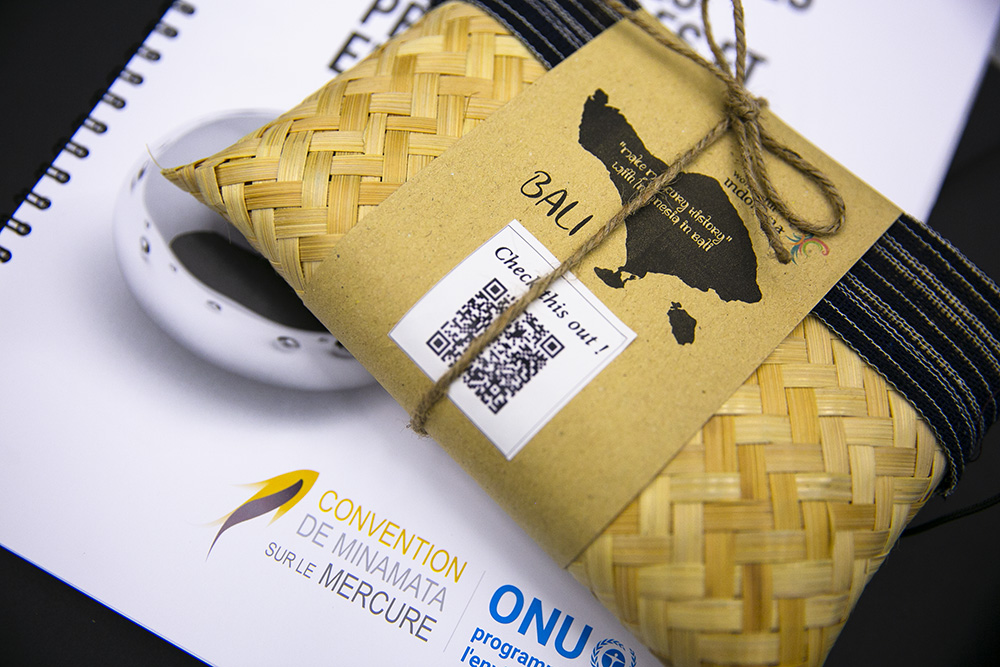
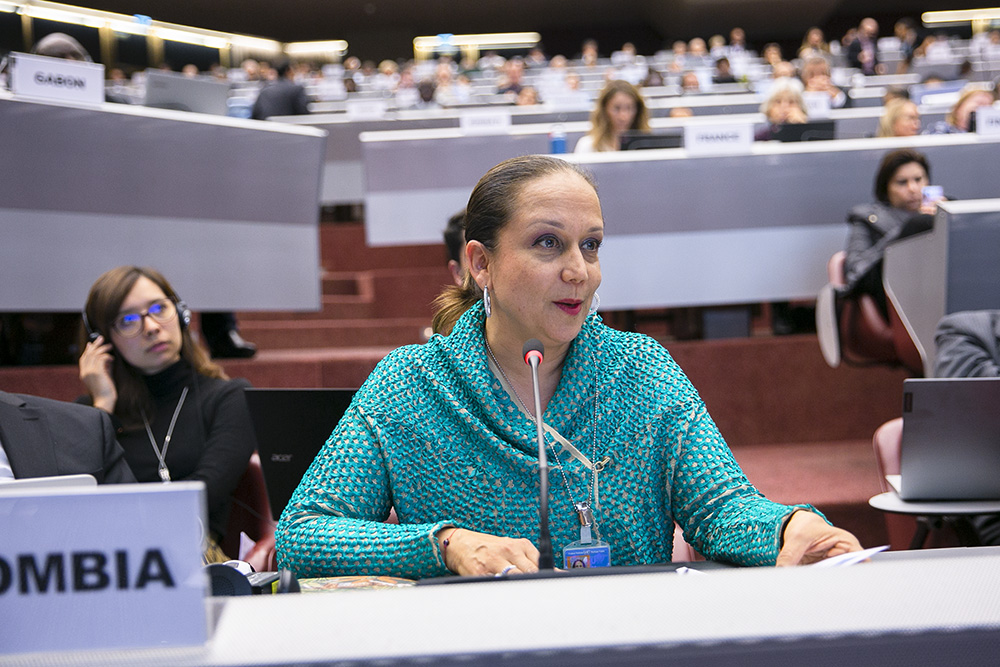
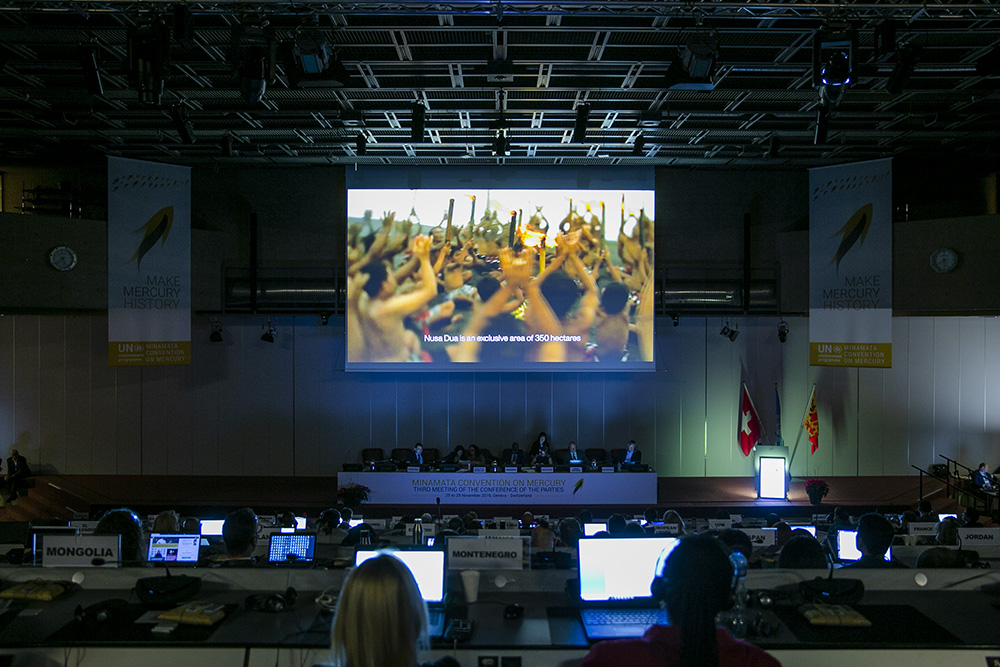
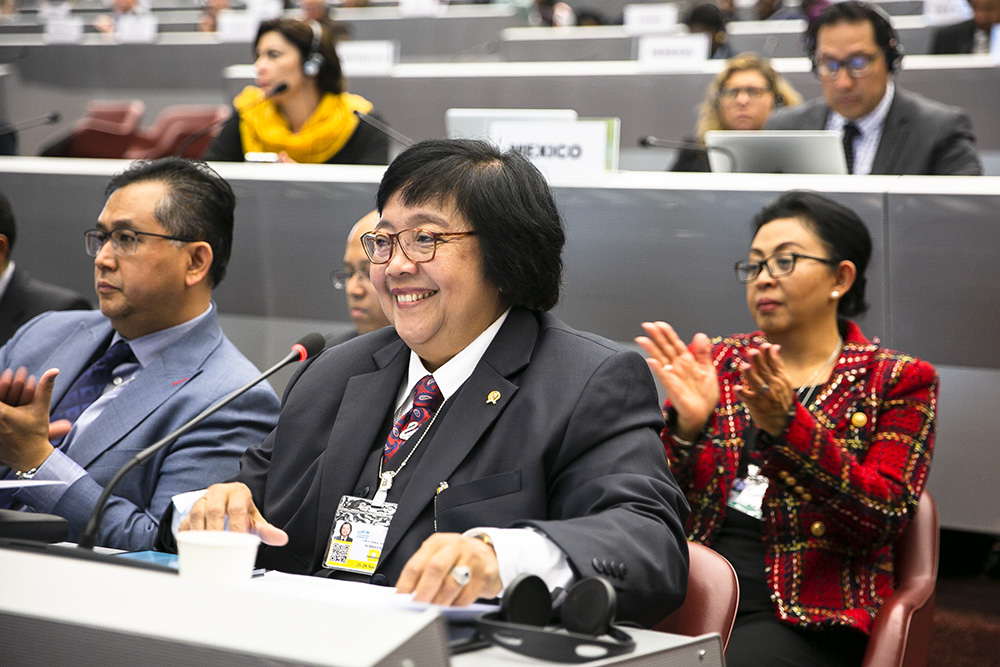
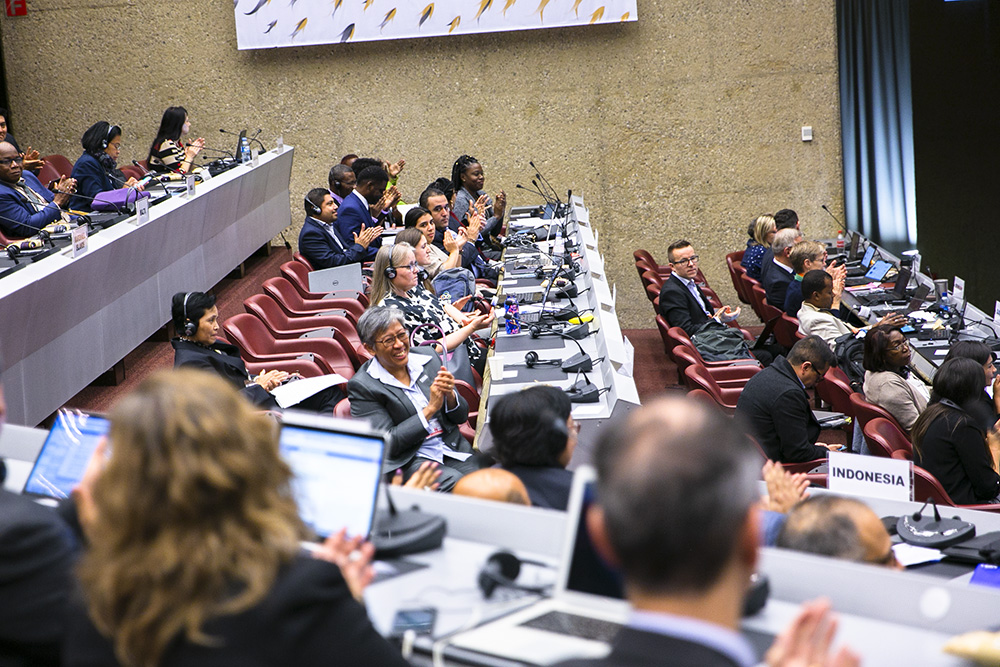
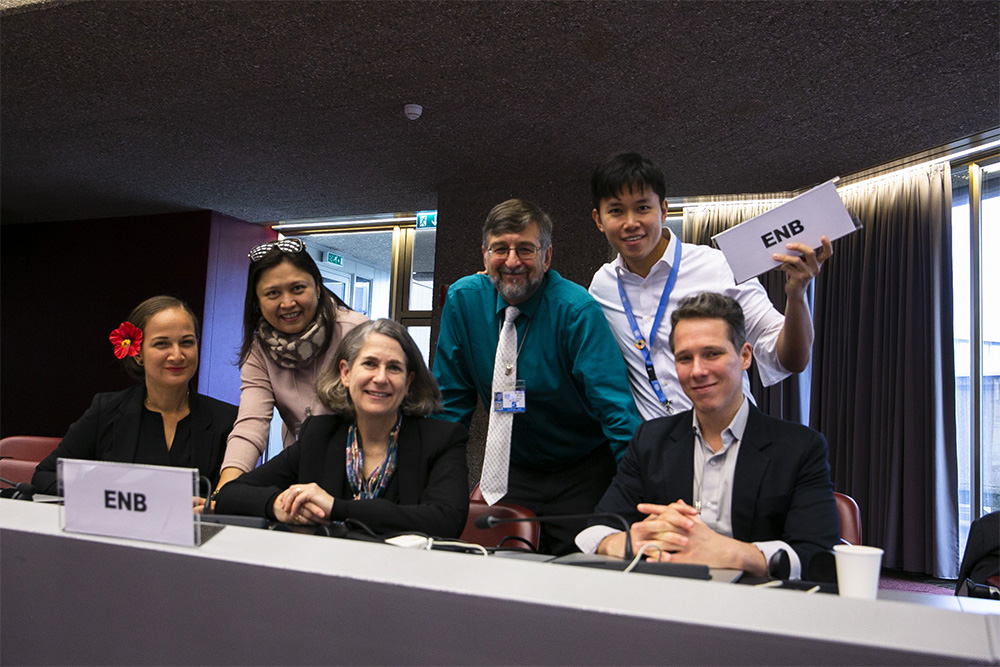
DOWNLOAD ENB REPORTS
COP3 Resources
- COP3 Website and Documents
- COP3 Tentative Schedule of Work
- COP3 Overview Schedule
- COP3 Annotated Provisional Agenda
- Minamata Convention Website
- Minamata Convention Text
IISD ENB/ENB+ Meeting Coverage
- 2019 Meetings of the Conferences of the Parties to the Basel, Rotterdam and Stockholm Conventions, 29 April - 10 May 2019, Geneva, Switzerland
- 4th Meeting of the Open-Ended Committee of Permanent Representatives to UN Environment Programme (UNEP) and 4th Session of the UN Environment Assembly, 4-8 March and 11-15 March 2019, UNEP headquarters, Nairobi, Kenya
- COP2, 19-23 November 2018, Geneva, Switzerland
- COP1, 24-29 September 2017, Geneva, Switzerland
- Diplomatic Conference of Plenipotentiaries on the Minamata Convention on Mercury and Preceding Preparatory Meeting, 7-11 October 2013, Kumamoto and Minamata, Japan
IISD Resources
- Subscription Page for IISD Reporting Services Peer-to-Peer Mailing Lists (including CHEMICALS-L, SDG, CLIMATE-L, BIODIVERSITY-L, OCEANS-L, and Regional Updates)
- SDG Update Newsletter - A compilation of news, commentary and upcoming events published on the SDG Knowledge Hub
- SDG Knowledge Hub - An Online Resource Center for News and Commentary Regarding the Implementation of the United Nations’ 2030 Agenda for Sustainable Development, including all 17 Sustainable Development Goals (SDGs)
- Linkages Update - International Environment and Sustainable Development News
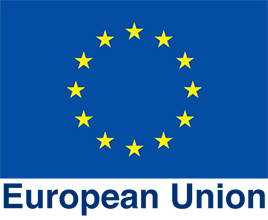 Specific funding for IISD Reporting Services coverage of COP3 has been provided by the European Union (EU)
Specific funding for IISD Reporting Services coverage of COP3 has been provided by the European Union (EU)